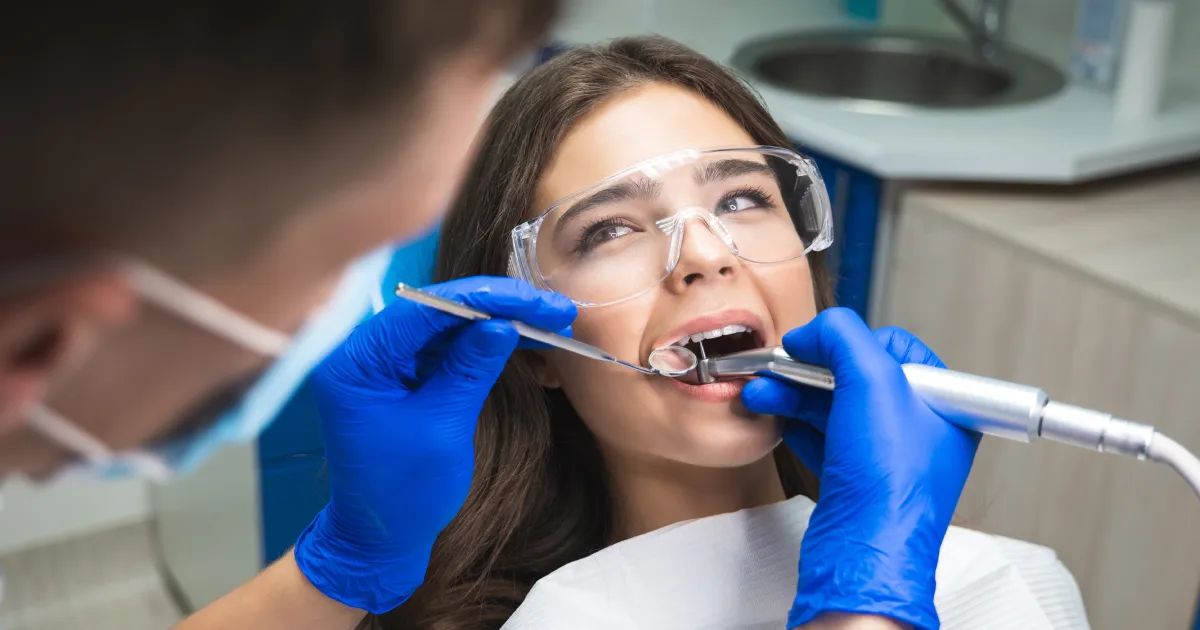Cosmetic dentistry has seen remarkable advancements in recent years, offering patients more alternatives than ever to achieve the smile of their dreams.
From innovative materials to cutting-edge technologies, the field is constantly evolving to meet patients’ demands, seeking aesthetic and functional improvements.
If you’re considering enhancing your smile, knowing the latest trends in cosmetic dentistry can help you make the best decision for your needs.
Let’s discover more about it in this blog below.
CEREC
CEREC, “Chairside Economical Restoration of Esthetic Ceramics,” is a dental technology that enables dentists to design, create, and place ceramic dental restorations, like crowns and veneers, in a single appointment.
Using 3D imaging and computer-assisted design (CAD) technology, CEREC takes a precise digital impression of your teeth, eliminating the need for messy molds.
The system then mills a custom restoration on-site, providing a durable, natural-looking solution that fits perfectly. This approach saves time and overall patient experience by delivering high-quality, aesthetically pleasing results quickly and efficiently.
Clear Correct
Clear Correct is a modern orthodontic approach that uses clear aligners to gradually straighten teeth. Unlike traditional metal braces, Clear Correct aligners are invisible, making them an ideal choice for adults and teens who prefer a more discreet option.
Over time, Clear Correct gradually shifts teeth into their correct position, offering an effective and aesthetically pleasing alternative to conventional braces.
Implant Restoration
Implant restoration is a dental method that replaces missing teeth with artificial ones anchored securely to the jawbone. This process typically involves the surgical placement of a titanium post into the bone, which acts as the new tooth’s root.
Once the implant is fused with the bone, a custom-made crown is attached to finish the restoration.
Dental implants are a long-lasting that not only restores the function of missing teeth but also preserves the integrity of the surrounding bone and facial structure. They are considered one of the most effective options for replacing single or multiple missing teeth.
Full Mouth Rehabilitation
Full mouth rehabilitation is a dental approach designed to address and restore all of a patient’s teeth. This approach is ideal for individuals who have experienced extensive dental issues such as tooth decay, gum disease, tooth loss, or jaw misalignment.
The process involves a combination of restorative and cosmetic procedures, such as crowns, bridges, veneers, implants, and sometimes orthodontics, to rebuild and enhance the function and appearance of the entire mouth.
Full-mouth rehabilitation aims to create a harmonious balance between the teeth, gums, and jaws, ultimately improving oral health and aesthetics.
Dental Technology
Dental technology refers to modern dentistry’s various advanced tools and techniques to improve diagnosis, treatment, and patient comfort. Innovations such as digital X-rays, 3D imaging, intraoral cameras, and CAD/CAM systems have revolutionized dental care, allowing more precise and efficient procedures.
These technologies enhance the dentist’s ability to detect issues early, plan treatments more effectively, and deliver high-quality restorations more accurately. The continuous evolution of dental technology plays a crucial role in providing patients with safer, faster, and more comfortable dental care.
Digital X-Rays
Digital X-rays are the newest alternative to traditional film X-rays, offering a faster, safer, and more efficient way to capture detailed images of teeth and jaws.
This also expose patients to significantly lower radiation levels than conventional X-rays, making them a safer option for routine dental examinations. Additionally, digital images can be easily stored and shared electronically, facilitating better communication between dental professionals and enhancing patient care.
Dental Sealants
Dental sealants are a preventive treatment used primarily on children’s molars to protect against tooth decay. These sealants are made of a thin, protective coating applied to the chewing surfaces of the back teeth, where cavities are used to develop.
The sealant acts as a barrier for food particles and bacteria from getting trapped in the deep grooves and fissures of the teeth. This simple and painless procedure can effectively lessen the risk of cavities in children and adolescents, promoting long-term oral health.
Dentures
Dentures are removable dental pieces that replace missing teeth and surrounding tissues. They are typically made from a durable acrylic or resin material, sometimes porcelain. Dentures can be either full (replacing all teeth in the upper or lower jaw) or partial (replacing a few missing teeth).
They help restore the appearance of a complete smile, improve chewing and speaking abilities, and support the facial structure to prevent sagging. Modern dentures are designed to fit comfortably and securely, offering a functional and aesthetically pleasing solution for those with significant tooth loss.
Bite Guards, aka Night Guards
Bite guards, known as night guards, are custom-fitted materials designed to protect your teeth from grinding (bruxism) and clenching during sleep.
These guards act as a cushion, absorbing the pressure and preventing damage to the teeth, enamel, and jaw joints. Wearing a bite guard can alleviate tooth sensitivity, jaw pain, and headaches associated with teeth grinding.
Bite guards help keep your teeth and jaw healthy by stopping teeth grinding at night, which protects your teeth and eases jaw pain, making you feel more comfortable overall.
Tooth Extractions
Tooth extractions are dental procedures to remove damaged, decayed, or problematic teeth that cannot be saved through other treatments. Common reasons for extractions include severe tooth decay, impacted wisdom teeth, overcrowding, or preparation for orthodontic work.
The procedure can be simple (for visible teeth) or surgical (for teeth that are broken or impacted). Tooth extractions help prevent further complications, such as infection or misalignment of the remaining teeth.
Final Thoughts
Cosmetic dentistry is continually evolving, with new trends and technologies making achieving a beautiful, healthy smile easier than ever.
Whether you’re interested in minimally invasive procedures, digital smile design, or the latest in AI technology, numerous options are available to help you achieve the smile of your dreams.
Book an appointment with us today to learn more about how we can help you achieve the perfect smile tailored just for you. Join our Cavity Free Club here too! We hope to see you around the clinic!






